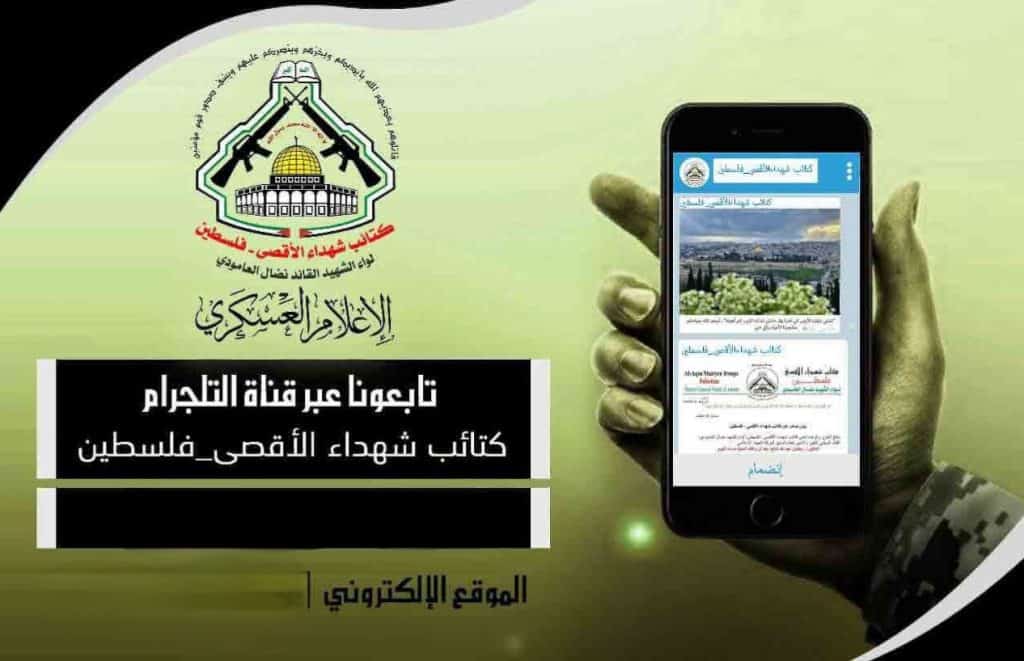
Between Gaza and the West Bank, there are approximately twenty active Palestinian militant organizations. Each group – to varying degrees – utilizes social media to spread its ideology, encourage attacks against Israelis and attract potential recruits.
Before the age of social media, Palestinian militant groups primarily used Mosques, schools and social service centers as a main conduit to circulate information regarding the organization’s activity. However, a significant shift occurred in 2014, when a seven-week-long conflict broke out in Gaza between the Israel Defense Forces (IDF) and Palestinian militant groups. During the conflict, Hamas and other groups extensively used social media to publish and promote footage of strikes on Israeli targets. One of the most infamous publications of the time was a raid against an IDF post near Nahal Oz by Hamas militants, the assault resulted in the death of five Israeli soldiers.
Hamas and other militant organizations learned the value of using social media to push their ideology. During and after the 2018 March of Return riots in Gaza, it became clear Palestinian factions had ramped up their social media presence by routinely publishing videos of attacks.
Throughout 2018 and 2019, militants representing a range of factions formed front groups that waged a low-intensity conflict against the IDF at the Gaza border. These groups, most of them named after iconic figures in Palestinian militancy, often filmed their exploits and published them on various social media platforms. For example, a Hamas front group called Ibna’ al-Zawari, named after Muhammed al-Zawari, used Facebook to publish videos of incendiary-laden balloons that were used to set fire to crops inside Israeli territory.
While at some point the groups’ exploits bordered on being absurd, the intent was clear: Palestinian militants groups wanted to draw the attention of Israelis and the international public to the campaign of violence that was being waged at the Gaza border.
Presently, a similar campaign of violence is being waged in the West Bank. With the support of external actors such as Hezbollah, Palestinian militant groups have frequently clashed with Israeli security forces and have launched strikes against Israeli civilians. A major component of the campaign has been social media. Militant groups routinely publish attacks on social media platforms such as Telegram to demonstrate their achievements to the Palestinian street and to the Arab world.
For example, the nascent militant organization the Lions’ Den owes much of its popularity to its social media presence. Presently on Telegram, the organization has approximately 235 thousand followers, more than any other Palestinian faction, including Hamas. Since August 2022, the group has published warnings to the Israeli government and videos of fighters targeting Israeli settlements with gunfire.
While publications of assaults and other forms of propaganda are a staple of Palestinian militant-run channels, incitement to commit violence is a key message. For example, on Feb. 14, Hamas published a video of Treasury-sanctioned Selah al-Arouri encouraging Palestinians to commit acts of violence against Israelis to fulfill the goal of “liberating the West Bank.” Another example published by Army of Islam encourages attacks against Israelis. A second publication by the group in the wake of the Jerusalem bombings last year demonstrates how an explosive is built using components that are readily available.
Lastly, militant-run channels and those affiliated with them often use social media to attract recruits. Slick graphics showing militants firing rockets and launching other attacks on Israeli targets is an effective method to inspire potential recruits. For example, in 2019 Hamas created a channel on Telegram dedicated to publishing information on military training camps used as a segue for children and teens to join the group. Information on how to register for the camps and other propaganda material including footage of militants instructing children on how to use fire arms were regularly published.
While social media companies have taken a hard line against accounts posting material related to terrorism, the system is not perfect. Hamas has successfully opened Twitter accounts that have lasted for a few months before being shut down. Palestinian Islamic Jihad and others have long abandoned Twitter and publish official material on other social media platforms. Valuable information for research purposes can be gathered by videos and statements, but the publications also serve as an important tool for these organizations to spread propaganda and incite further violence in an already troubled region.







